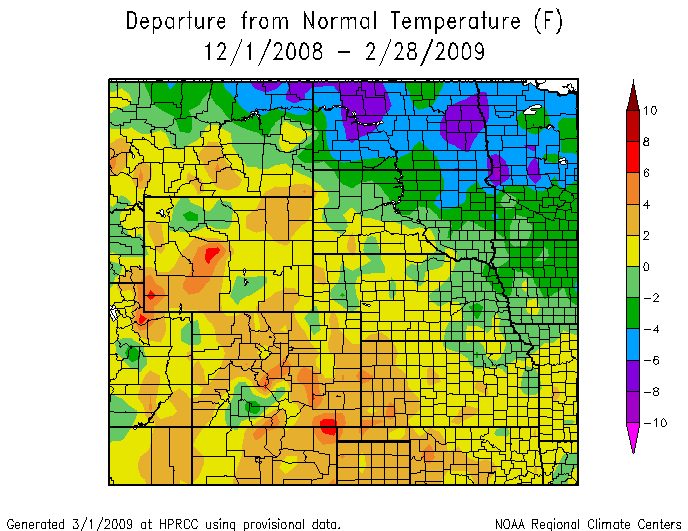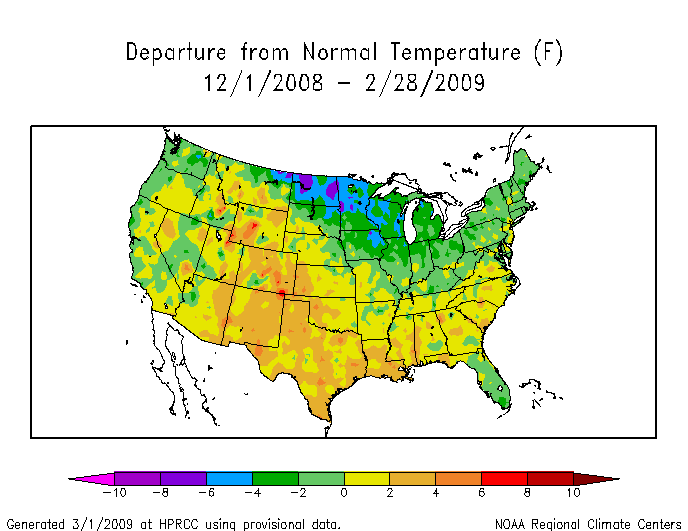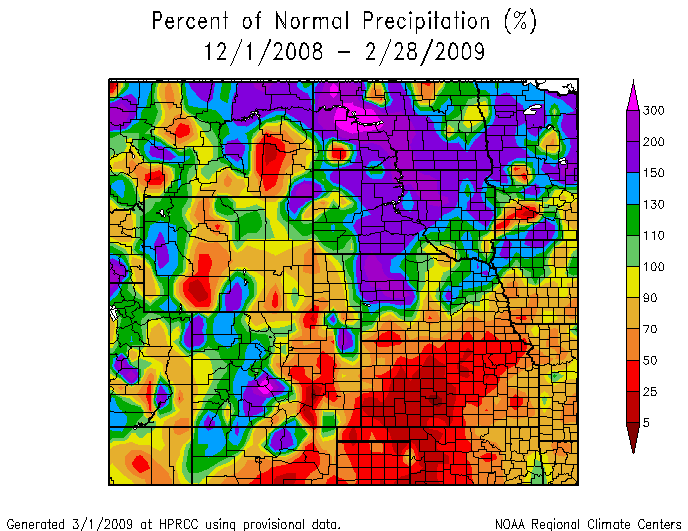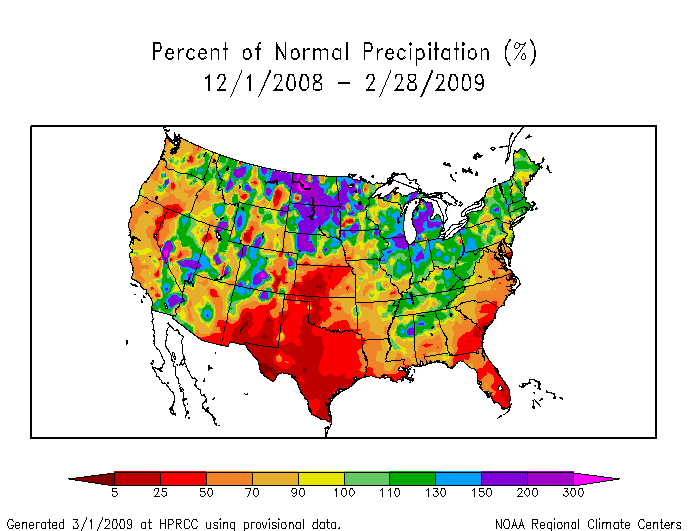



Winter
2008-09 Climate Summary
December 1, 2008 - February 28, 2009
Although the
public commonly uses the astronomical dates of December 21-March 21 for the
Winter season, climatologists and the National Weather Service have
traditionally used the
3-month time period December 1 through February 28 as "Climatological" Winter.
Therefore, the
analysis found here refers to the Winter of 2008-09 as December 1, 2008 through
February 28, 2009
| As noted in the following maps, "Climatological"
Winter 2008-2009 was warmer than normal (yellow and orange colors on the
maps) for much of the High Plains region. The frequent "Alberta
Clippers" bringing a fresh supply of Arctic air down into the Midwest
meant the northeastern region of the High Plains was colder than normal.
A far larger area of the conterminous U.S. (lower 48 states) experienced
a warmer than normal Climatological Winter (yellow and orange colors) as
also noted on the U.S. map below. This was a continuation of the
recent trend toward warmer than normal winters for the lower 48 states
averaged together. The Winter of 2008-2009 in the High Plains region saw two extremes in precipitation with a large area of the Dakotas (purple colors on the map) receiving over 150% of normal precipitation and, Kansas into Oklahoma receiving less than 50% of normal precipitation (red colors on the map). Nebraska, caught in the middle saw well above normal precipitation in the north central portion of our state and well below normal precipitation along the southern border of the state. The U.S. map for the Winter of 2008-2009 shows below normal precipitation across most of the U.S. with the greatest negative departure from normal across the Southern Plains and all of Texas and New Mexico. It has also been a very dry winter in Florida and the far southeastern states. Winter precipitation was also below normal in the western states which is problematic since winter is the rainy season in California and the Pacific Northwest is commonly in the Winter. This area of the country will go going into their growing season with a deficit in moisture that will be difficult to overcome. The only larger areas that experienced above normal precipitation this winter were in the upper High Plains and the Great Lakes region. |
    |